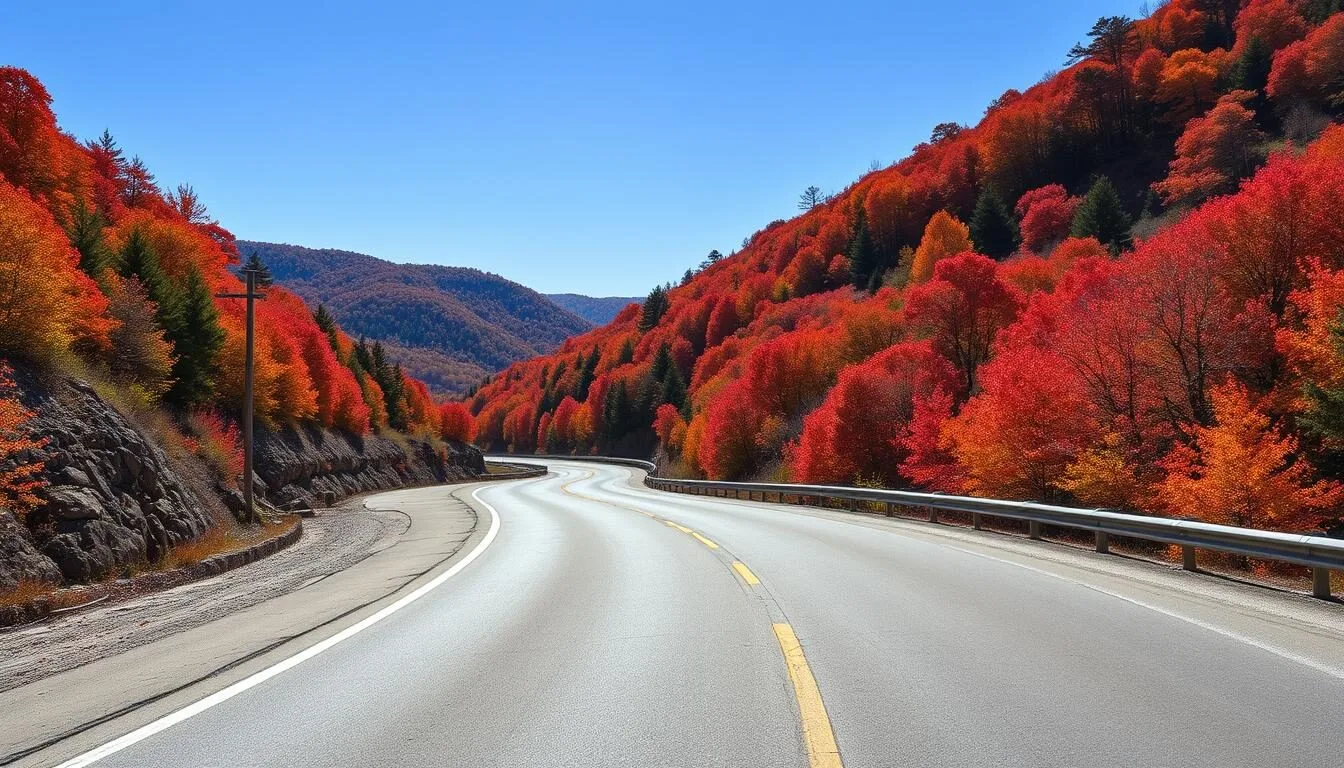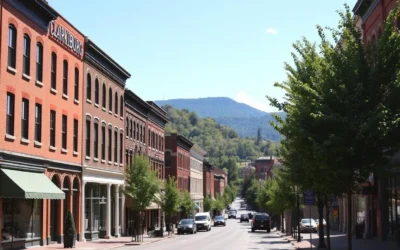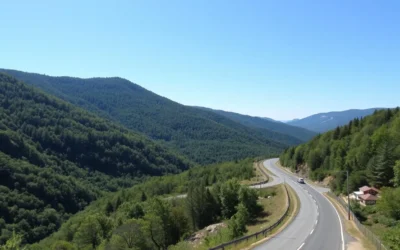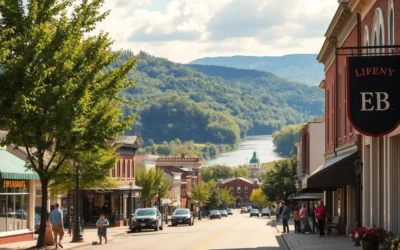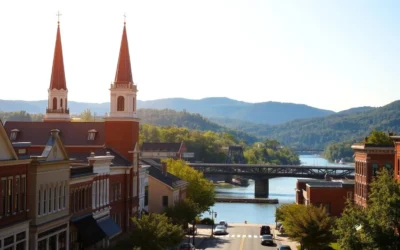✓ Accommodations ✓ Flights ✓ Rental Cars
Spanning nearly one million acres across eastern West Virginia, Monongahela National Forest hosts over three million visitors annually who come to explore its 500+ miles of hiking trails, 23 campgrounds, and some of the darkest night skies in the eastern United States. This vast wilderness area, established in 1911, offers endless opportunities for outdoor enthusiasts while protecting critical habitat for over 200 bird species and numerous endangered wildlife.
Getting to Monongahela National Forest
Monongahela National Forest is accessible by car from several directions, with the forest spanning across multiple counties in eastern West Virginia. Most visitors arrive by personal vehicle as public transportation options are limited in this rural area.
By Car
The forest is approximately a 3-hour drive from Pittsburgh, 4 hours from Washington D.C., and 5 hours from Columbus, Ohio. Major highways that provide access include US Route 33, US Route 219, and US Route 250. For navigation, set your destination to one of the ranger district offices or specific attractions like Seneca Rocks or Blackwater Falls State Park.
Nearest Airports
The closest commercial airports are Yeager Airport in Charleston, WV (about 2.5 hours from the southern portion of the forest) and Pittsburgh International Airport (about 3 hours from the northern section). From either airport, you’ll need to rent a car to reach the forest.
Ready to Explore Monongahela?
Book your flights now to start your West Virginia adventure!
Best Time to Visit
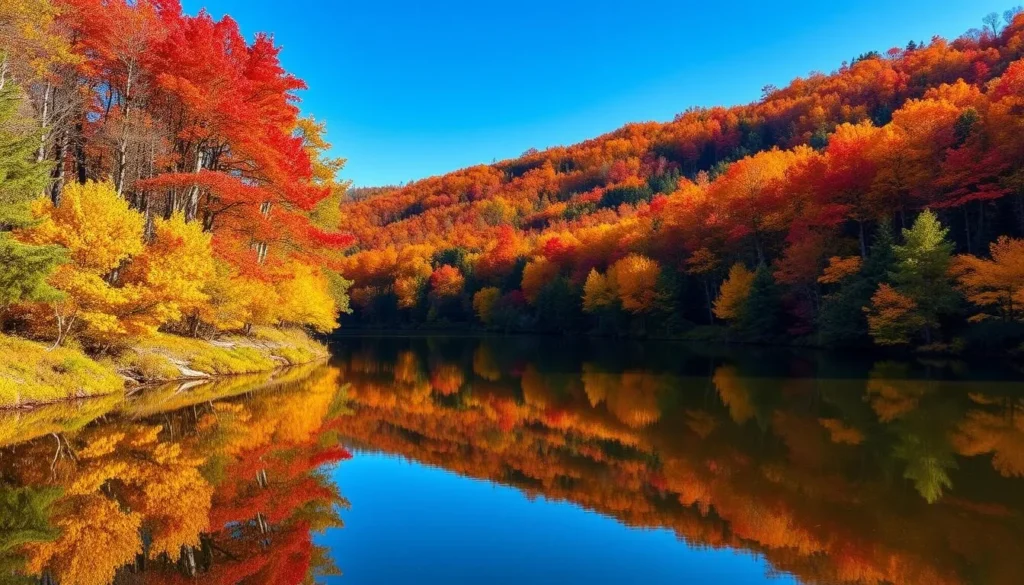
Monongahela National Forest offers unique experiences in every season, though weather conditions can vary dramatically due to the elevation changes throughout the forest (ranging from 2,000 to over 4,800 feet).
Spring (April-May)
Spring brings wildflowers and moderate temperatures, though trails can be muddy from snowmelt. Waterfalls are at their most impressive during this time. Weather can be unpredictable, so pack layers and rain gear.
Summer (June-August)
Summer offers warm days perfect for hiking, camping, and water activities. Temperatures typically range from 70-85°F during the day but can drop significantly at night, especially at higher elevations. This is peak season for most activities.
Fall (September-October)
Early to mid-October brings spectacular fall foliage, making this one of the most popular times to visit. The Highland Scenic Highway becomes a destination itself during peak color. Temperatures are comfortable for hiking, but nights can be chilly.
Winter (November-March)
Winter transforms the forest into a quiet wonderland with opportunities for cross-country skiing, snowshoeing, and sledding. The Canaan Valley area offers downhill skiing. Many forest roads close during winter, so check conditions before visiting.
Plan Your Perfect Stay
Find accommodations near Monongahela National Forest for any season
Top Attractions in Monongahela National Forest
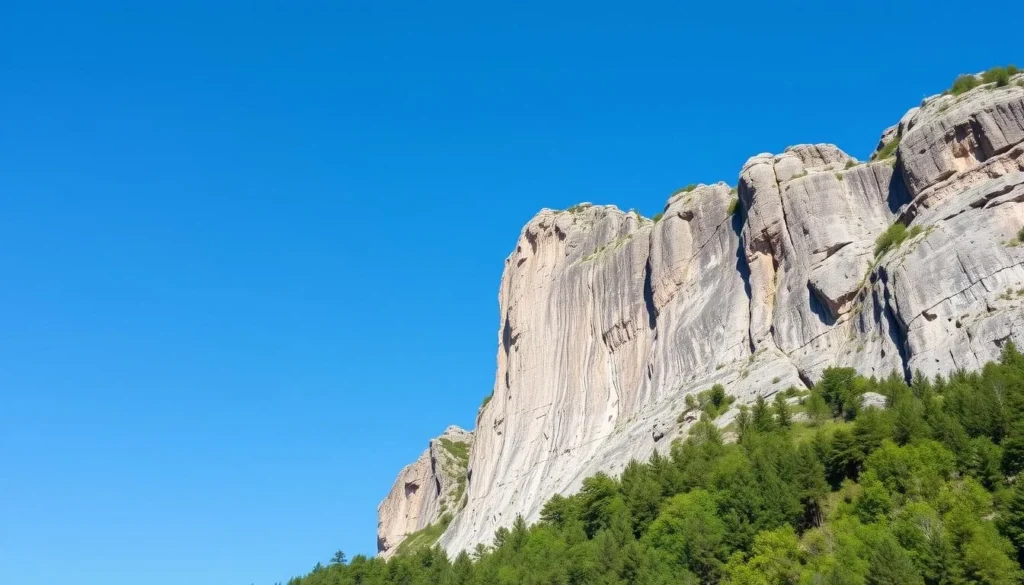
Seneca Rocks
One of the most iconic landmarks in West Virginia, Seneca Rocks features dramatic 900-foot tall quartzite rock formations that attract rock climbers from across the country. A moderately challenging 3-mile round-trip trail leads to an observation platform with spectacular views. The trail gains about 800 feet in elevation and takes approximately 2 hours to complete.
Spruce Knob
Standing at 4,863 feet, Spruce Knob is the highest point in West Virginia. A short walk from the parking area leads to an observation tower with panoramic views of the Allegheny Mountains. The unique alpine-like environment features wind-stunted red spruce trees and boulder-strewn meadows. Several hiking trails originate from this area, including the scenic Huckleberry Trail.
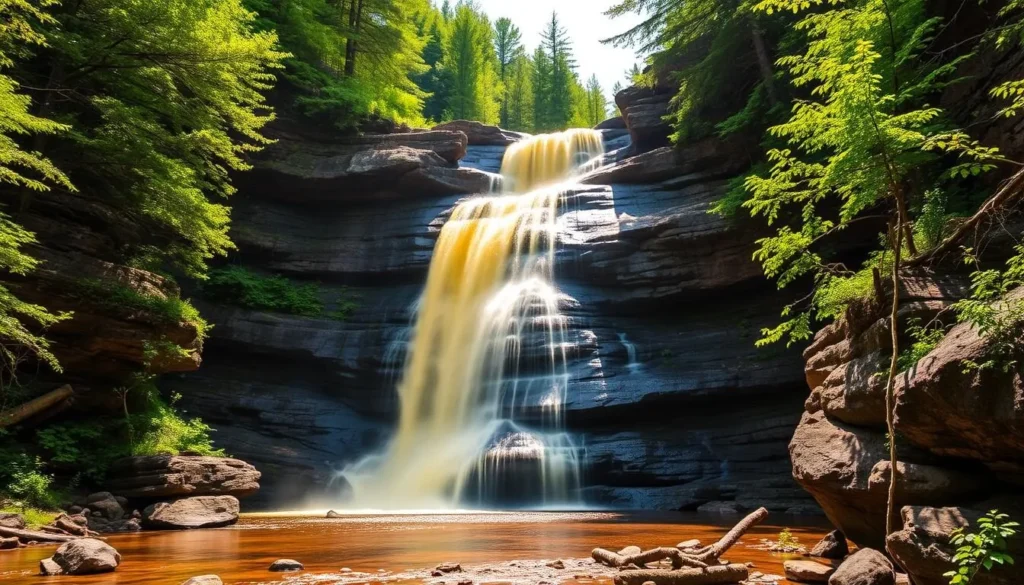
Blackwater Falls
Located in Blackwater Falls State Park within the forest, this 57-foot cascade gets its distinctive amber color from tannic acid released by fallen hemlock and red spruce needles. Easily accessible viewing platforms connected by boardwalks and steps provide multiple vantage points. The falls are spectacular in all seasons, with winter creating dramatic ice formations.
Dolly Sods Wilderness
This unique high-altitude plateau features ecosystems typically found much further north in Canada. Wind-swept plains, rocky outcrops, and stunted trees create an otherworldly landscape. The area offers over 47 miles of hiking trails ranging from easy walks to challenging backcountry routes. Bear Rocks provides an easily accessible viewpoint with minimal hiking required.
Highland Scenic Highway
This 43-mile National Scenic Byway winds through the forest at elevations between 2,300 and 4,500 feet. Four developed overlooks provide spectacular views of the surrounding mountains and valleys. The route is especially popular during fall foliage season but offers beautiful vistas year-round. Allow at least 2 hours for the drive with stops at overlooks.
Explore Without Limits
Rent a car to discover all the hidden gems of Monongahela National Forest
Outdoor Activities
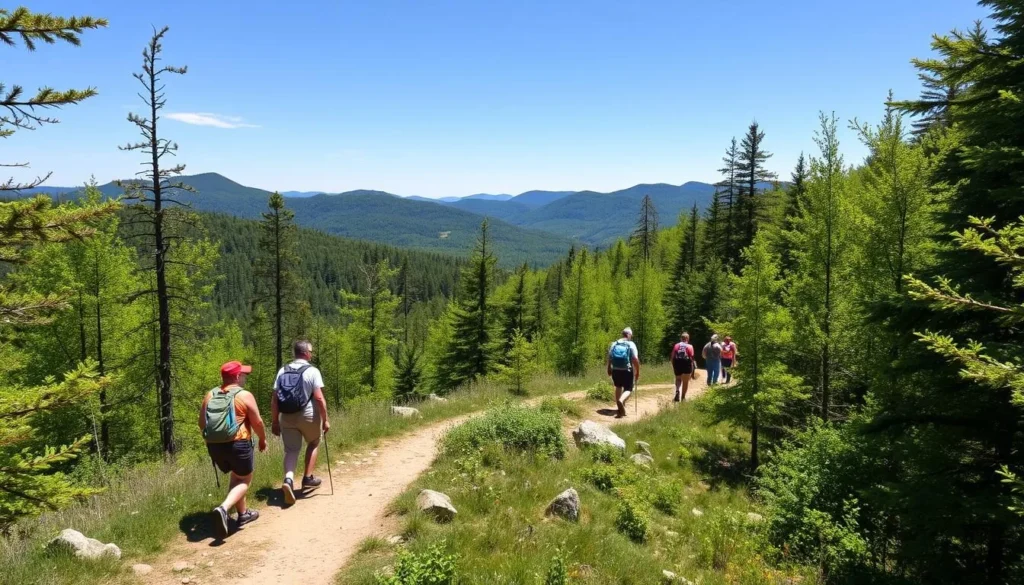
Hiking and Backpacking
With over 500 miles of trails, Monongahela offers hiking opportunities for all skill levels. Popular day hikes include the Seneca Rocks Trail (3 miles round-trip), Blackwater Falls Canyon Rim Trail (2 miles), and Bear Rocks Trail in Dolly Sods (2.4 miles). For backpacking, the 24-mile North Fork Mountain Trail offers ridge-top views and primitive camping, while the Spruce Knob-Seneca Creek Trail system provides a 16.5-mile loop with waterfalls and backcountry campsites.
Fishing
The forest contains six major river systems teeming with fish. The Monongahela River offers diverse aquatic life including catfish, bass, walleye, and bluegill. The Potomac River is known for smallmouth bass fishing, while the Greenbrier River is perfect for fly fishing. The Elk River is renowned for muskellunge, walleye, and smallmouth bass. A West Virginia fishing license is required and can be purchased online or at local outfitters.
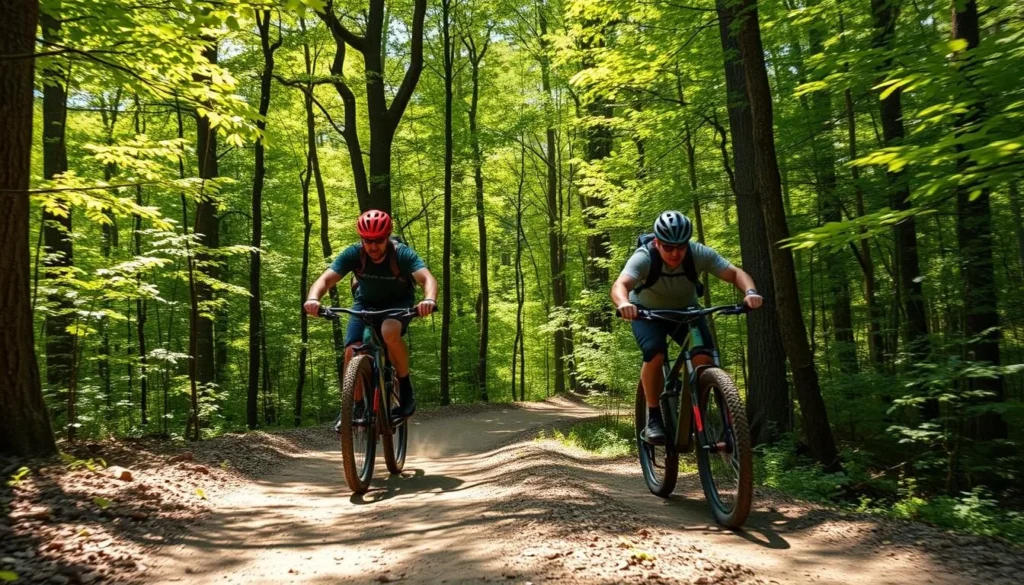
Mountain Biking
Several areas in the forest offer excellent mountain biking opportunities. The Canaan Mountain area features old logging roads and single-track trails suitable for intermediate to advanced riders. The Gauley Mountain Trail system provides challenging terrain with significant elevation changes. For a more leisurely ride, the Highland Scenic Highway has several pull-offs where forest service roads offer easier cycling routes.
Rock Climbing
Seneca Rocks is the premier rock climbing destination in the eastern United States, with over 375 mapped routes ranging from beginner (5.0) to expert (5.12) in difficulty. The multi-pitch traditional climbing requires experience and proper equipment. Several guiding services in the nearby community of Seneca Rocks offer instruction and guided climbs for all skill levels.
Winter Sports
When snow blankets the forest, opportunities for winter recreation abound. The Canaan Valley area offers downhill skiing, while cross-country skiing is popular on the Highland Scenic Highway and various forest service roads. Blackwater Falls State Park maintains a quarter-mile sled run with a magic carpet lift, the longest in the eastern United States. Snowshoeing is possible throughout the forest when conditions permit.
Discover Guided Adventures
Book guided tours and activities to make the most of your forest experience
Where to Stay
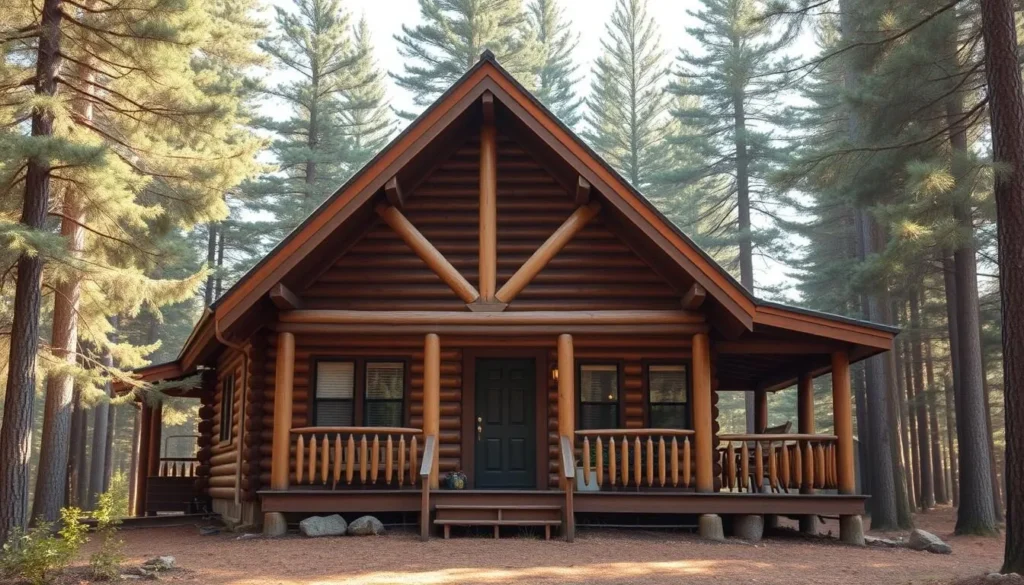
Campgrounds
The forest maintains 23 developed campgrounds with varying levels of amenities. Popular options include Seneca Shadows Campground near Seneca Rocks, which offers tent and RV sites with stunning views of the rock formation. Big Bend Campground along the Potomac River provides excellent fishing access. Red Creek Campground in Dolly Sods offers a more primitive experience with vault toilets and no running water. Most campgrounds operate seasonally from April through October, with a few open year-round.
Cabins and Lodges
For those seeking more comfort, several state parks within or adjacent to the forest offer cabin rentals and lodge accommodations. Blackwater Falls State Park Lodge provides 54 rooms with private balconies overlooking the canyon, plus a restaurant and indoor pool. Canaan Valley Resort features modern hotel rooms, cabins, and cottages, along with dining options and recreational facilities. Reservations are strongly recommended, especially during summer and fall foliage season.
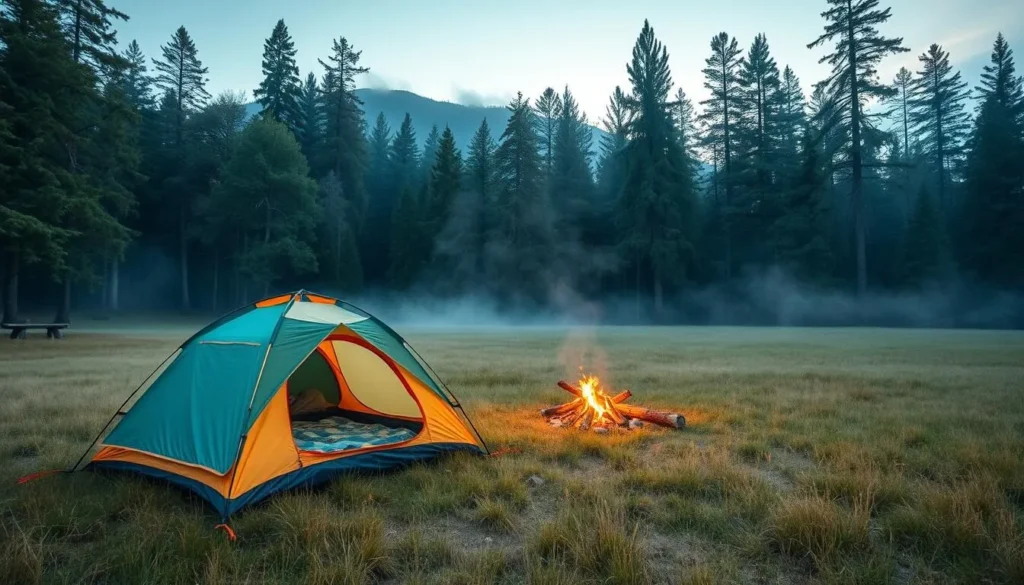
Backcountry Camping
Dispersed camping is permitted throughout much of the forest except in developed recreation areas and within 300 feet of roads, trails, or water sources. No permits are required for backcountry camping, but visitors should follow Leave No Trace principles. Popular backcountry camping areas include Dolly Sods Wilderness, Otter Creek Wilderness, and the Spruce Knob-Seneca Creek area. Bear-resistant food storage is recommended throughout the forest.
Nearby Towns
Several small communities around the forest perimeter offer additional lodging options. Davis and Thomas near Blackwater Falls feature charming bed and breakfasts and vacation rentals. Elkins provides more hotel options and serves as a good base for exploring the central portion of the forest. Marlinton in the southern section offers historic inns and access to the Greenbrier River Trail.
Find Your Forest Retreat
Book the perfect accommodations for your Monongahela adventure
Practical Tips for Visiting
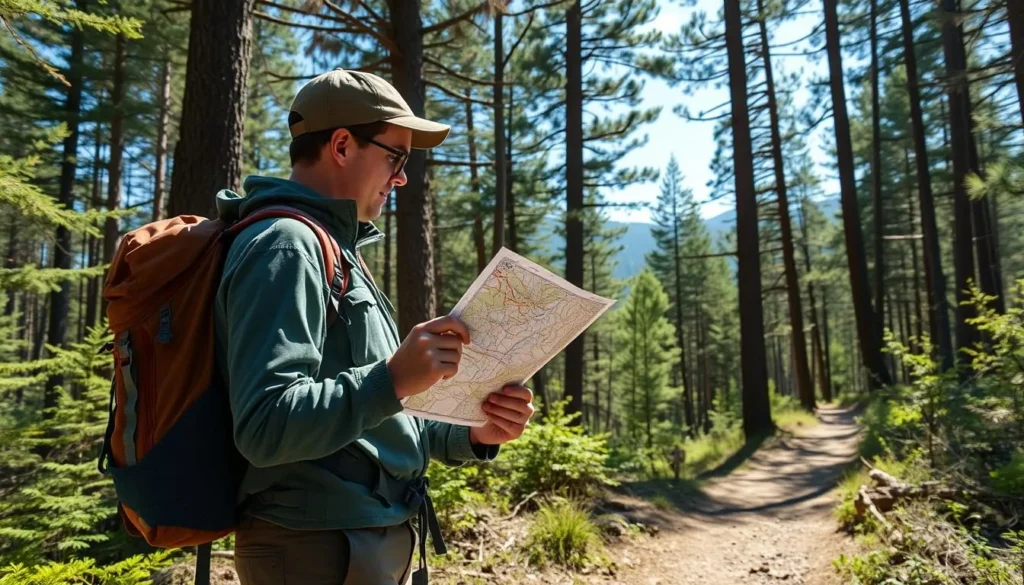
Safety Considerations
Cell phone coverage is limited or non-existent in much of the forest, so download offline maps before your trip. Weather can change rapidly, especially at higher elevations, so pack layers and rain gear regardless of the forecast. Black bears are present throughout the forest—store food properly and know what to do if you encounter one. During hunting seasons (typically fall and early winter), wear blaze orange when hiking. Always let someone know your planned route and expected return time before heading into remote areas.
Permits and Regulations
No entrance fees or permits are required to visit most areas of Monongahela National Forest. Camping at developed campgrounds typically requires a fee, with some sites reservable through Recreation.gov. Fishing requires a West Virginia fishing license. Campfires are permitted in designated fire rings at campgrounds and in backcountry areas unless fire restrictions are in place. Check with ranger district offices for current regulations before your visit.
What to Pack
Visitor Centers
The Seneca Rocks Discovery Center offers exhibits on local geology, forest ecology, and cultural history, plus helpful rangers who can provide trail recommendations and current conditions. The Cranberry Mountain Nature Center in the southern portion of the forest features wildlife displays and information about the area’s natural history. Both centers typically operate seasonally from April through October with limited winter hours.
Experience the Wonder of Monongahela

From the towering peaks of Seneca Rocks to the wind-swept plains of Dolly Sods, Monongahela National Forest offers some of the most diverse and spectacular landscapes in the eastern United States. Whether you’re seeking challenging hikes, peaceful fishing spots, thrilling mountain bike trails, or simply a quiet campsite under the stars, this ancient forest has something to offer every outdoor enthusiast.
As you plan your journey through this million-acre wilderness, remember that the forest’s greatest gift may be the opportunity to disconnect from the digital world and reconnect with nature. In Monongahela’s remote valleys and high mountain meadows, you’ll find not just adventure, but also the restorative power of wild places that have been protected for generations to come.
Your Monongahela Adventure Awaits
Start planning your perfect forest getaway today
The above is subject to change.
Check back often to TRAVEL.COM for the latest travel tips and deals.
